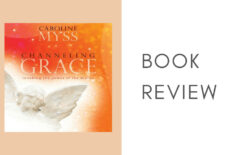Nature does not hurry and yet everything is accomplished.
– attributed to Lao Tzu
We’re all about finding useful tips and awesome life hacks to make life easier and more productive.
So when we learned about this particularly useful life hack we knew we had to share with you.
This isn’t your typical hack – you most likely won’t find it on Google or social media and it isn’t another DIY project involving random items like glue guns, toothpaste, or hangers.
This is a productivity lesson we can learn from observing nature.
And who doesn’t want to get more done and function more efficiently in life, work, and everywhere, right?
Focus on being productive instead of busy.
– Tim Ferriss, author of ‘The 4-Hour Work Week”
There are only so many hours in the day, and often it seems that no matter what we do or don’t do, we somehow fall short of truly tackling the ever-growing to-do list.
When we perceive we’re not doing enough or aren’t able to meet deadlines, overwhelm and stress start creeping in, compromising our productivity even further.
But true efficiency and effectiveness aren’t found by running rampant on a hamster wheel.
They aren’t found by wearing busy and “barely slept” as a badge of honor.
Instead of “more is more” it turns out that “less is more.”
And Mother Nature has proven it in the most unsuspecting way…
Looking to Nature for Productivity Advice:
Mother Nature is our greatest teacher.
Since the beginning of time, human beings have been inspired by the wisdom and beauty of nature.
Spending time in pure nature can unlock our own inner peace, and can create ripples across our entire life.
By observing natural flow patterns and imitating them, we can experience the Flow State – a state of efficiency, creativity, inspiration, intuition, insight, and productivity which opens up a new world for our perception.
The Flow State is a natural state that we can access by turning inwards.
Are you ready to flow?
By studying and honoring the intelligent cycles and patterns of the natural world we can upgrade ourselves and our world.
There’s a whole area of study dedicated to observing and garner inspiration from the natural environment to solve problems and make processes more efficient – it’s called Biomimicry or Biomimetics.
The Institute of Biomimicry defines it as:
“An approach to innovation that seeks sustainable solutions to human challenges by emulating nature’s time-tested patterns and strategies.”
Essentially, what the study of biomimicry sets out to do is help us become ‘apprentices of nature’ as science writer and innovation consultant Janine Benyus calls it.
Through biomimicry, we learn to maneuver through life emulating nature: achieving mental, emotional, and physical efficiency by creating the maximum output with the minimum, or most optimal use of resources.
Let’s look at one specific area of nature – a butterfly’s metamorphosis process…
Life lessons from the Chrysalis (Cocoon):
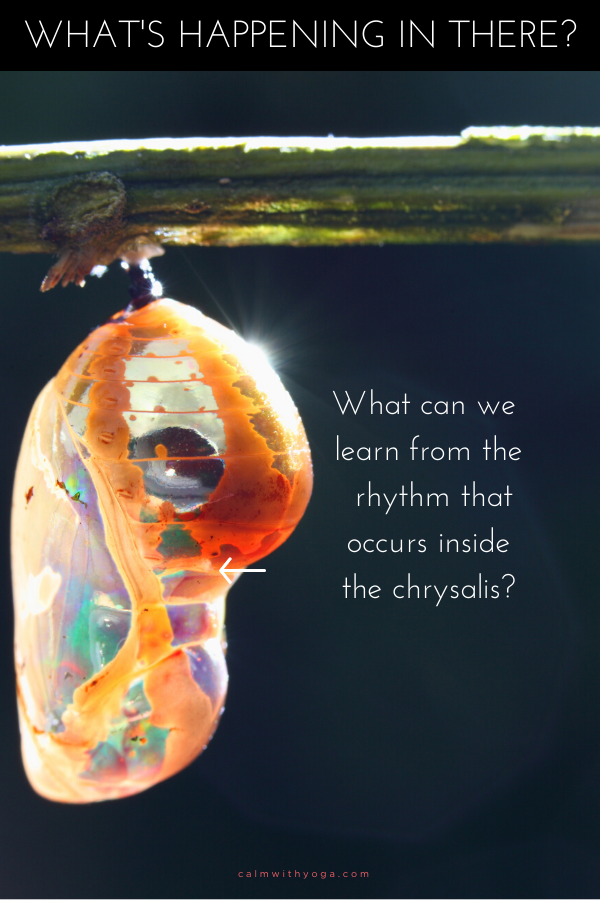
UCLA physics professor and scientist, Dr. Jim Gimzewski researches how cell vibrations create sounds.
He studies how we’re affected by sounds and how even the ‘tiniest cells vibrate creating sound currents.’ (1)
Gimzewski is considered a pioneer in a new field of research: sonocytology (the study of cell vibration and sounds.)
Stay with me here, I promise this is about to get interesting…
In 2009, Dr. Gimzewski studied how butterflies develop inside the chrysalis (cocoon) by measuring the butterfly’s heart rate. (2)
For the first time, he found that:
“What happened was that this thing as it undergoes metamorphosis is not continuously changing, it’s undergoing bursts of oscillation.
Then there’s a period of quietness, and then another burst.
And towards the end of the cycle where it emerges, the amount of activity increases so that the ‘on’ period is much longer than the virtual ‘off’ period.” (1)
Here’s the actual recording of the butterfly’s heart rhythms taken from Gimzewski’s TEDx talk.
You can see the bursts of activity followed by the pause periods that appear as a straight line:

Life Hack: Adopting a Flow (Activity/Pause) Cycle:
This is how a butterfly is made…
By honoring both the yang side of life (action) and the yin side of life (pause).
The butterfly is an intuitive master strategist!
She maximizes resources by activating energy at specific times and then pausing.
The pause serves as an incubator for integrating after activity.
What would happen if we applied this flow cycle in our lives too?
How would our overloaded bodies and minds respond?
Could overwhelm and stress be transformed by simply living more rhythmically?
Could we achieve more by putting our foot on the brakes at specific times?
Personally, I found that the more I connected to this flow pattern in my own life the better I felt.
It’s taken some work to find my rhythm and I’m still working at it but I’ve noticed subtle shifts and an increase in moments of insight.
The more I tapped into my inner knowing, the more in the flow I was and the more I accomplished.
And the quality of my output and work improved.
Honoring the flow pattern in my life helped grow my intuitive capacity, it brought on waves of new and inspired ideas, and it eventually led to experiencing a much deeper connection and trust in myself.
This propelled me to create more… of the right things.
I also realized that committing to live in the flow of Nature’s rhythms was more complicated and involved than it sounded.
The concept sounds simple enough and do-able: take action, rest, take action, rest…
But the implementation and application is another thing entirely because it goes against our “go-go-go” nature.
A bit of grace and self-compassion is needed because you won’t always get the timing right (I most certainly don’t.)
But this practice isn’t about perfection, it’s about constant learning.
Learning to listen to our inner wisdom.
Learning to listen to our bodies.
Learning what works for us and what doesn’t.
This practice is about learning to slow down and turn inwards so we can hear the subtle nudges prompting us to put our foot on the gas pedal and create, or put the brakes on and rest.
Learning to live in the flow state requires commitment, tenacity, willingness, and a lot of freaking patience because it takes time and serious work to uncover and familiarize yourself with your own flow pattern.
It’s a never-ending endeavor.
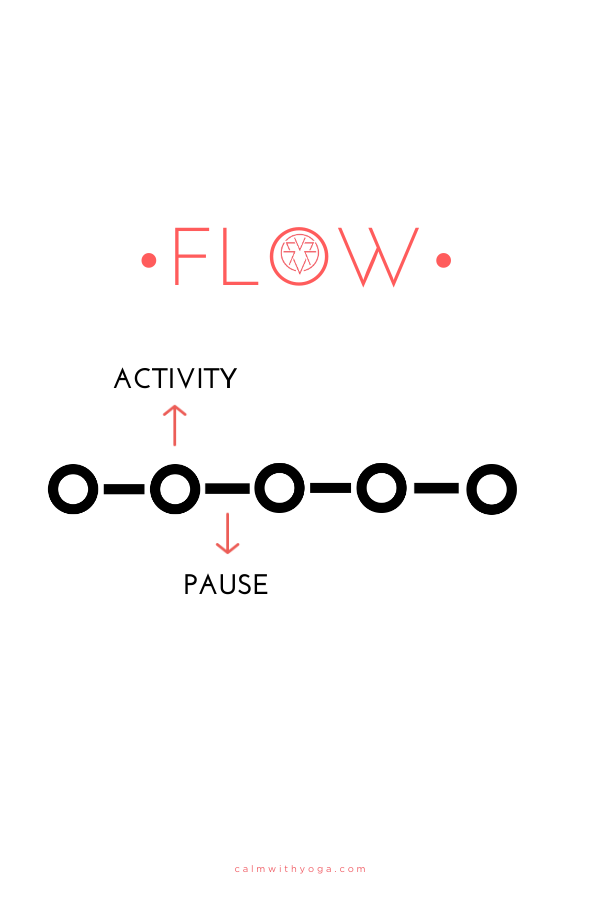
The caterpillar (future butterfly) understands that in order to create something beautiful and valuable, on any level, there’s a dance that must take place.
True flow is rhythmic and cyclical.
There is an optimal time for activity, action, creation, and work; and there is also an optimal time for pausing, resting, silence, surrender, and integration.
Our work lies in being so connected to ourselves that we learn to intuit what phase we’re in and also when it’s time to switch gears.
Again, the objective isn’t to get it perfect.
The objective is to keep getting better and better listening to the nudges while also gracefully learning from the times we don’t get it so right.
Adopting an Activity-Pause cycle & flow rhythm in your life can:
- Help you avoid burnout and unnecessary energy drains and leaks.
- Increase creativity, focus, imagination, and inspiration.
- Help you restore and replenish the moments you need it most.
- Reduce guilt and inner dialogue like: “I should be doing more.”
- Help minimize “workaholic” tendencies as a means of escape.
- Clear your mind and sharpen mental processing.
- Improve mental or physical performance.
- Help you integrate and process difficult emotions and unconscious charges.
- Increase self-awareness and auto-reflection.
- Help you slow down so you can respond to your surroundings instead of reacting to your surroundings.
- Increase physical energy reserves.
- Give your body time to heal and recover.
Remember: the Pause is just as important as the Action!
The Pause ensures that the right action.
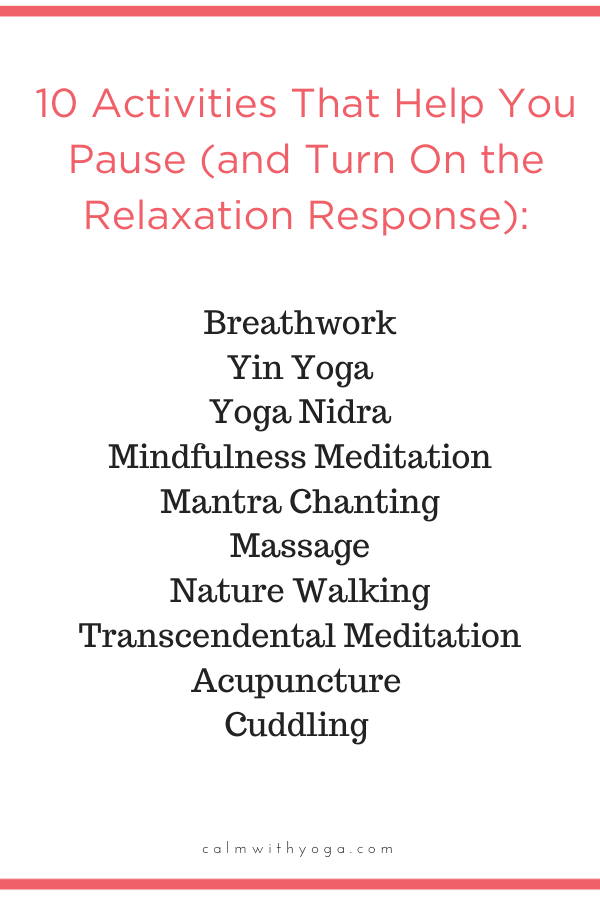
How to Apply Action (Yang)/ Pause (Yin) Cycles in Real Life:
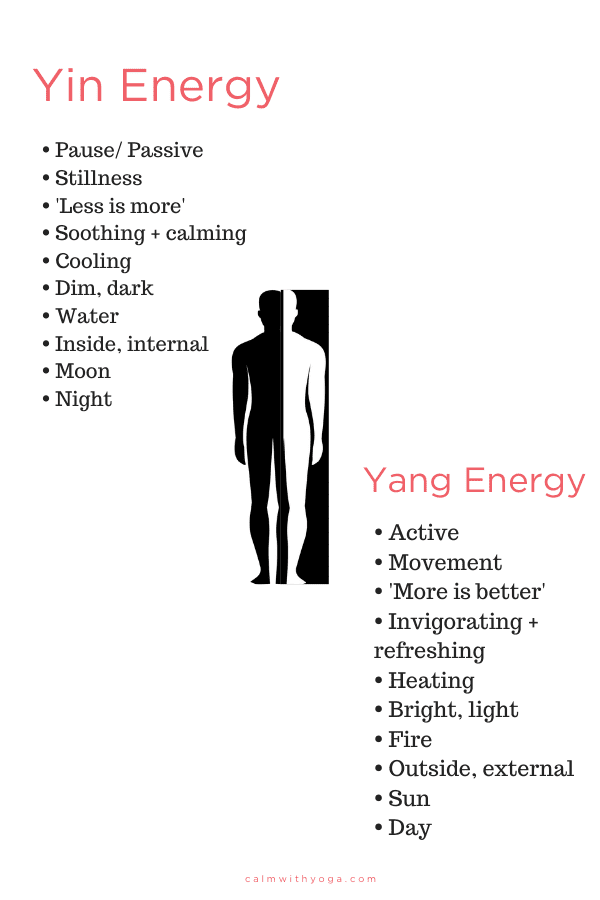
How do we actually achieve this kind of intuitive cyclical living?
How can we apply all of this information to our own lives to be more productive, effective, inspired, and creative?
We can start by breaking this all down into smaller parts.
There are two practical perspectives from which we can approach this:
1) Daily Basis (24 hour period) Perspective
2) Project Basis Perspective
1) Daily Basis:
Your body is wired and programmed in such a way that it already functions according to a 24-hour period.
This is called your biological clock or circadian rhythm, it’s your body’s built-in natural time-keeping system.
Your circadian rhythm function is reflected in clear daily patterns of biological activities such as brain wave activity, hormone production, and cell regeneration. (3)
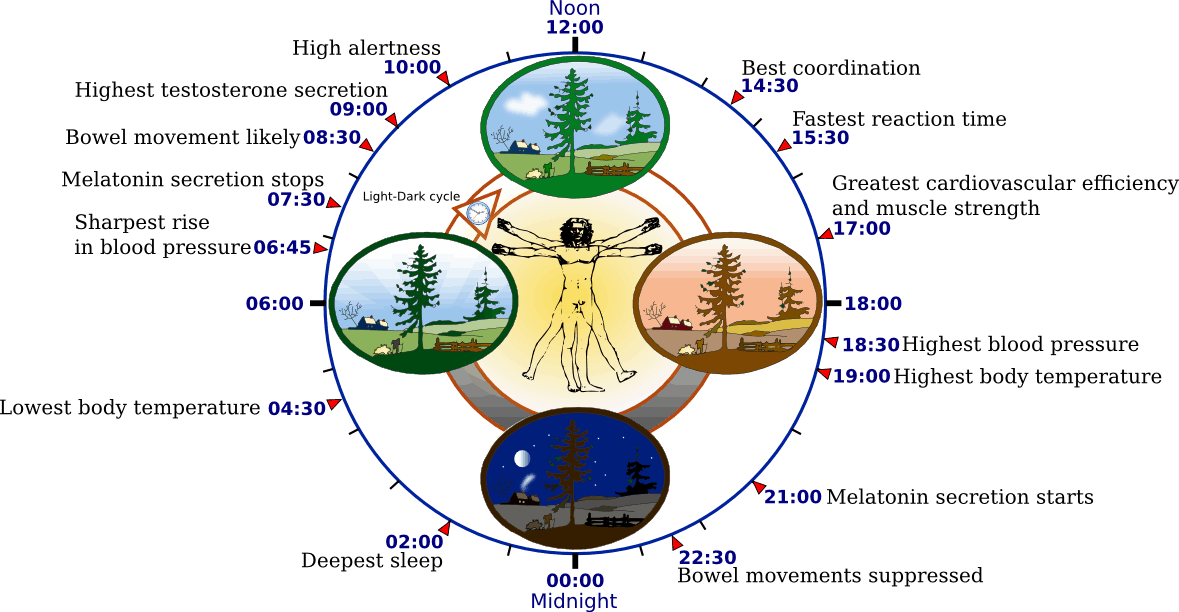
“Light seems to play the largest role in setting your circadian “clock.”
Sunlight and other time cues are used to keep your clock set from day to day…
The circadian rhythms of a healthy person are “in tune” like the many instruments of an orchestra.
Body temperature, for example, starts to rise during the last hours of sleep.
This occurs just before waking up.
This may promote a feeling of alertness in the morning.
Body temperature decreases at night when the time for sleep draws near.
A small drop in temperature also occurs in most people between 2 p.m. and 4 p.m.
This may explain why many people feel sleepy in the early afternoon.
It has not been proven that changes in body temperature determine our sleep habits.
But there does appear to be a link between the two.” (4)
You can take advantage of this built-in daily system by intentionally and deliberately setting up habits and practices that take advantage of your body’s natural cyclical phases.
This will help strengthen mental, emotional, physical, and energetic resilience in the face challenges, stresses, and shifts in your life.
One of the best ways to do this is by starting your morning with meditation, mindfulness, and/or contemplative practice.
This is a tried and tested small yet extremely powerful way of incorporating the Pause into your day before the Action and flux begin.
Starting your day with a mindful Pause will help take advantage of your natural rhythms so that you harness your energy, focus, and alertness with more flow, grace, and ease.
It’s no wonder that some of the most successful, inspired, influential, and creative people hold this daily ritual and habit.
Steve Jobs, Oprah, Tony Robbins, and Tim Ferriss are all part of the Morning Meditators Club. (5)
If you want to take this practice even one step further, you will also end your day with a mindful Pause.
By adding a Pause right at the end of your day and right at the end of your Activity period you’re allowing yourself to integrate what you’ve accomplished for the day.
You’re also re-balancing your mental, emotional, physical, and energetic system so you can recalibrate and release tensions accumulated throughout the day.
This will allow for a more enhanced and optimal Rest period, which will ultimately lead to a more optimized Wake period the next day:
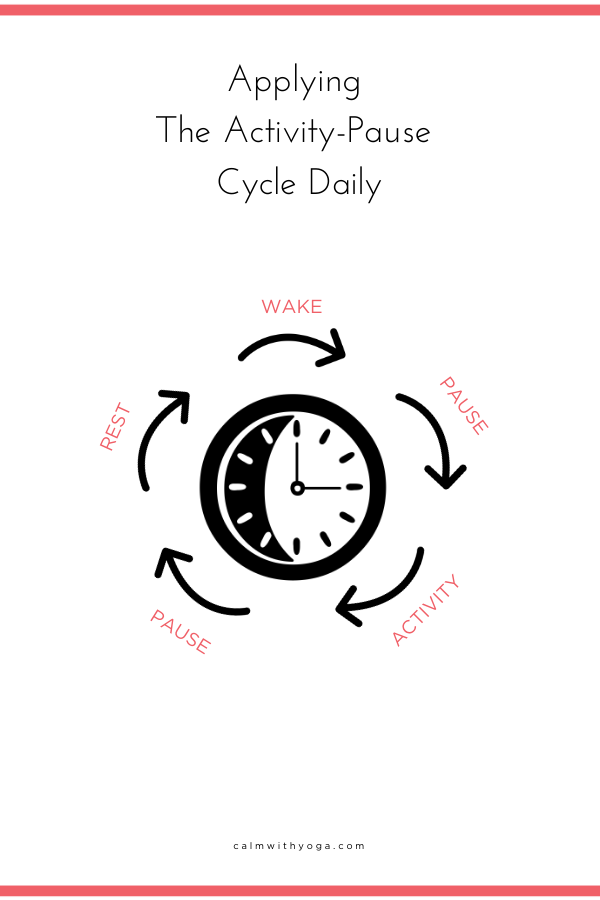
This is why many meditation teachers, myself included, encourage meditating twice a day for optimal and most efficient results…
First thing in the morning (before coffee or other stimulants and before breakfast), and in the evening, preferably before dinner but at least make sure you fully digest your food before the evening session.
This doesn’t have to be a daunting or long process…
You can start with 10 minutes in the morning, and 10 minutes in the evening.
To help get you started, here are 9 different ways to meditate – some of them you can practice right as you open your eyes in the morning!
I get my AM meditation session in the minute I wake up before I get out of bed.
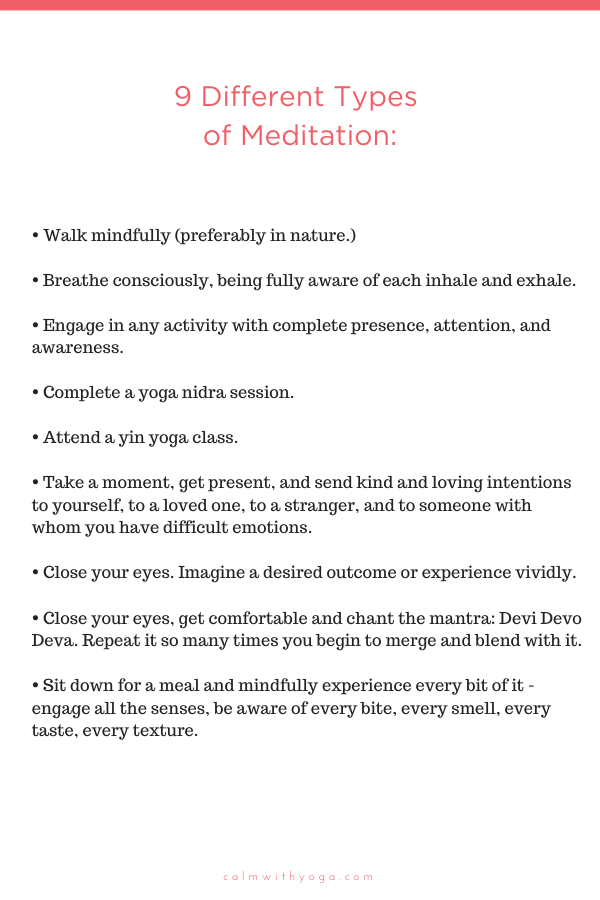
Regularly giving your mind support and noticing the way it benefits your body will nourish your spirit to its fullest form of expression.
Mark Hyman, MD, physician, author, educator
Here’s a guided meditation you can try to get started if you don’t already have a meditation practice:
https://soundcloud.com/calmwithyoga/self-realization-meditation-dissolve-fear-anxiety-overwhelm
2) Project Basis:
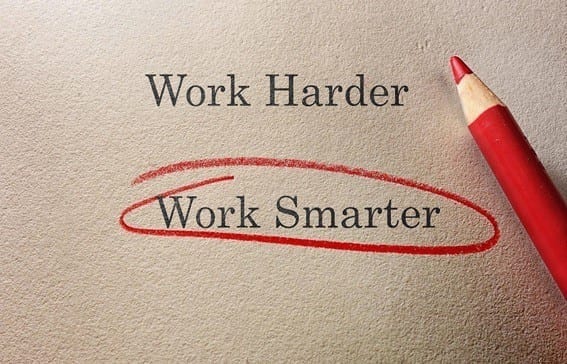
Another way you can honor the Activity-Pause Cycle in your life is when you’re working on any kind of project.
You’ll soon find that incorporating such cycles will increase your productivity as well as creativity.
Being mindful of the Pause during each phase of your task or project, (no matter how long or short or involved it is), helps keep energies balanced, and helps keep the creative juices flowing.
Here are two options:
#1 – Chunk the day/work down by working for an hour straight and then take a 10-minute break before returning to tackle another hour.
Try your best to step away from the computer, ignore the phone, rest your eyes away from screens of any kind.
I’ll either sit in the reading corner of my office and meditate, go to my yard and just sit on the grass barefoot, or hit the yoga mat for some stretching and yin poses. (It’s truly amazing how effective just 10 minutes of yin yoga practice can be for releasing tensions!)
#2 – Use the Pomodoro Method.
The technique involves batching work activity based on a set amount of time and then pausing for a short period of time before continuing on with the next work batch.
You can read more about this productivity-boosting technique here.
Some other benefits of the technique:
1. Manage distractions by chunking down the tasks and setting yourself up to win.
On average it can take 23 minutes and 15 seconds to get back into the flow after an interruption, so this method is “focus gold.” (6)
2. The regular, programmed micro-breaks reduce mental + physical burnout, thereby helping you cultivate more reserves for the long haul.
3. It helps to take advantage of the brain’s natural reward centers.
With each successfully completed set AND each time we mark our task as complete, we’re signaling our brain to register that as a reward and an accomplishment.
Our brain then secretes the ‘feel-good’ chemical dopamine, which has been linked to pleasure and motivation.
This sets off a ripple effect that builds momentum and the desire to ‘do more’ and ‘keep going.’
4. Eliminate the feeling of ‘wasting time’ because you can track every task and really have a good grasp of your progress so the hours in the day don’t zoom by.
When We Match Our Nature to Nature, We Grow & Thrive:
The goal of life is to make your heartbeat match the beat of the universe, to match your nature with Nature.
-Joseph Campbell, profesor, mythologist, & author
There you have it, two specific and implementable ways in which you can honor Nature’s cycles at work within you.
Like the caterpillar-turned-butterfly, if you create the spaces and pauses necessary to honor the rhythmic dance happening in your life you too will be upgraded to a higher version of yourself.
Your stress levels will shift and become more manageable.
You’ll grow more resilient.
You’ll approach projects and deadlines from a more grounded and balanced stance.
You’ll go from a limited perspective like that of the caterpillar, so a higher more ascended perspective on your life and all of the circumstances in it.
Just the like butterfly, who by fluttering its wings is able to view the world from below and look down on the landscape with a wider vantage point, so too will you see things you didn’t see before.
You just might find yourself reaching heights you previously thought unlikely.
REFERENCES
:
(1) https://www.youtube.com/watch?v=DpUkKYmuCI8
(2) http://rsif.royalsocietypublishing.org/content/6/30/29.short
(3) https://www.sciencedaily.com/terms/circadian_rhythm.htm
(4) http://sleepcenter.ucla.edu/circadian-rhythms
(5) https://www.inc.com/bryan-adams/6-celebrity-morning-rituals-to-help-you-kick-ass.html
(6) https://www.ics.uci.edu/~gmark/chi08-mark.pdf





